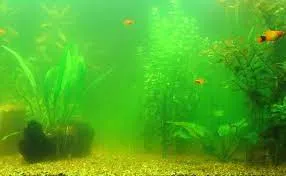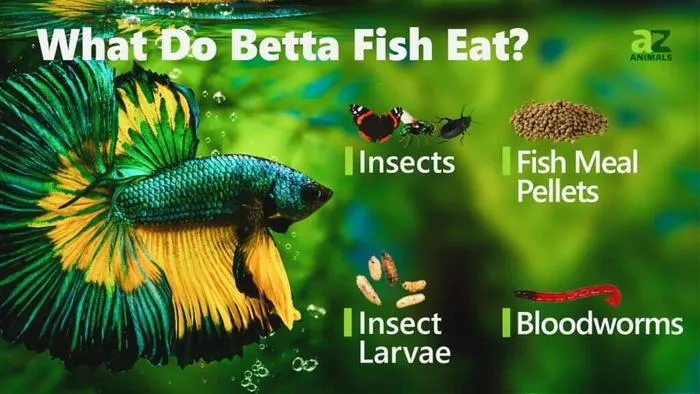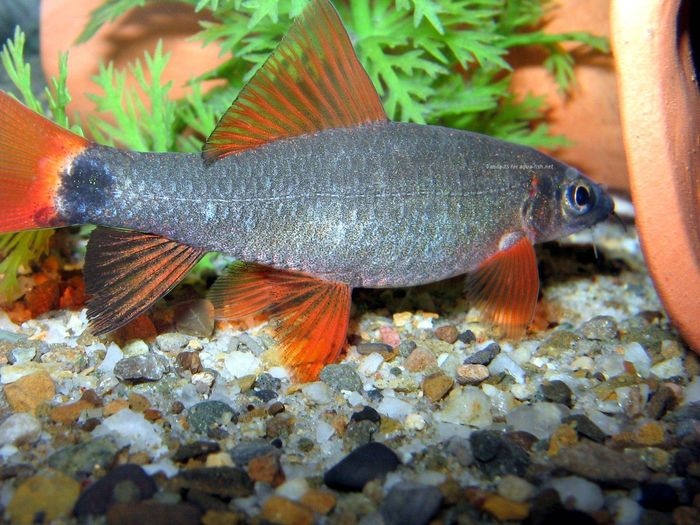Are you looking to start a freshwater aquarium hobby? Here are some of the best low maintenance fish to consider for beginners. It is important to remember that creating and maintaining an aquarium needs some effort and work. But don’t worry; some fishes are easy to take care of for beginners.
Low Maintenance Fish for Beginners
1) Neon Tetra
Black Neon tetras are one of the fish you immediately think of when the word “Aquarium” comes up! They are the oldest and beautiful fish for the aquarium. They grow in a wide range of temperatures and extreme pH.
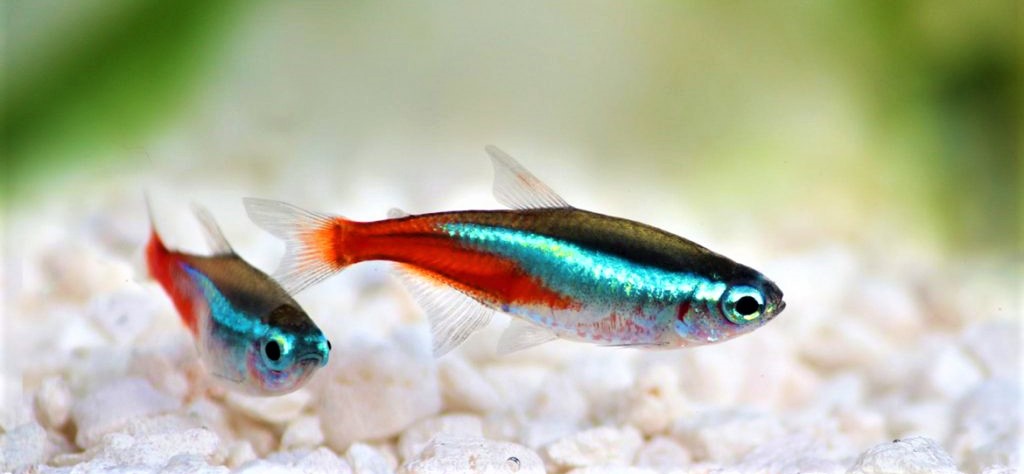
Like most tetras, it prefers tropical conditions and soft, acidic water. They are not as sensitive as their closest cousin Cardinal Tetra. Since cardinals are usually found in the wild, they are more demanding in terms of water quality.
Neon tetras are more accessible to breed than other tetras. Plenty of fresh live food and Amazon water conditions is the best way for spawning condition.
They are schooling fishes that live in groups of thousands of individuals in nature. Never place them in groups smaller than six fishes as they tend to be restless.
2) Platies
When it comes to matching and mixing fish, platies are an excellent choice. They come in a variety of shades and are specially grown to create new and different color combinations. There are plentiful varieties of platies to satisfy almost any person’s taste.
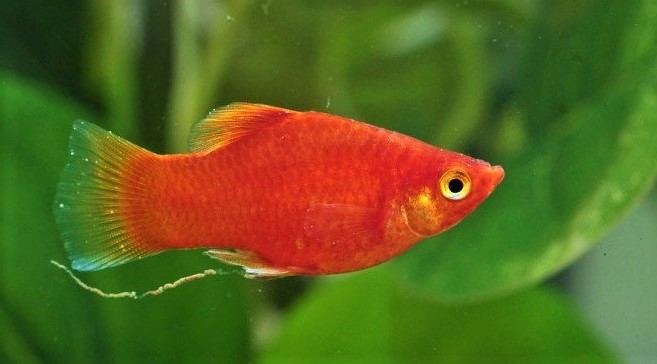
They are also known to combine with other dormant low maintenance fish species. Since they are a living-bearing species, they will produce offspring at a high rate, but be careful, as some other species will see their offspring as a source of food.
If we talk about food, plates eat all types of food, including frozen, dried fish food or dry flakes. They eat primarily prepared fish food, but they also eat algae in fish tanks, representing ecosystem cleaners.
3) Dwarf Gourami
Gouramis are a distinct group of South Asian fishes. Although the Dwarf Gourami is a small, low-maintenance, stress-free option for a small fish tank, most are medium to large.
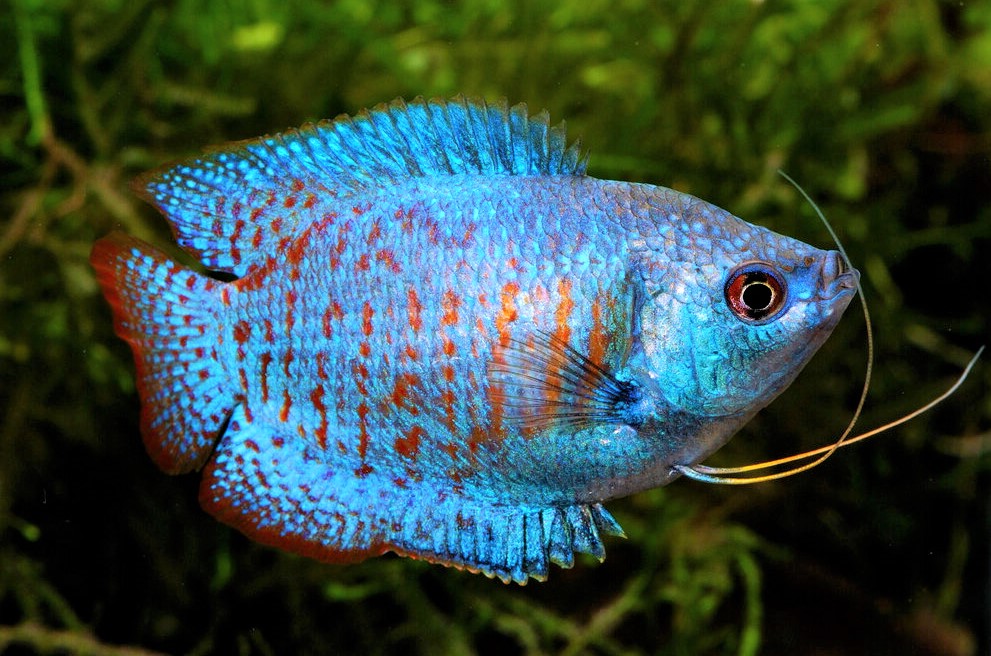
Like bettas, they can breathe atmospheric gases to increase the oxygen they get from water. Males will also form bubble structures and try to coax the females that germinate beneath them.
Dwarf Gourami males are more colorful and compete with females. They are not as aggressive as bettas, and multiple males can live together when each is given at least 10 gallons of space.
They can live in the temperature range from 76- -84 and pH between 5.0-7.0. They should be offered the right size canned food and small prey such as brine shrimp and daphnia!
4) Black Skirt Tetra
The black skirt Tetras are a popular choice for aquariums that are looking for low maintenance fish and stress-free fish for the tank. They are larger than most Tetras but still best for your tank.
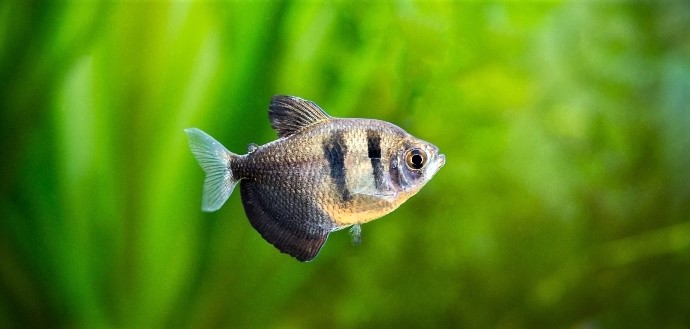
Their fins are naturally a bit longer, which increases beauty. There are also long-finned varieties with more curtain-like fins!
This hearty carnivore prefers anything meaty, including sea shrimp and blood worms with relatively flakes and pellets.
The black skirt tetras are also one of the main species of Glofish. This is the first commercially available genetically engineered pet! They use jellyfish and coral DNA to create fluorescence under UV lighting.
5) Zebra Danio
Many of the tropical fish found in pet stores do so in cold water aquariums. Goldfish are the most common choice, but many smaller and more colorful fishes are in options too.
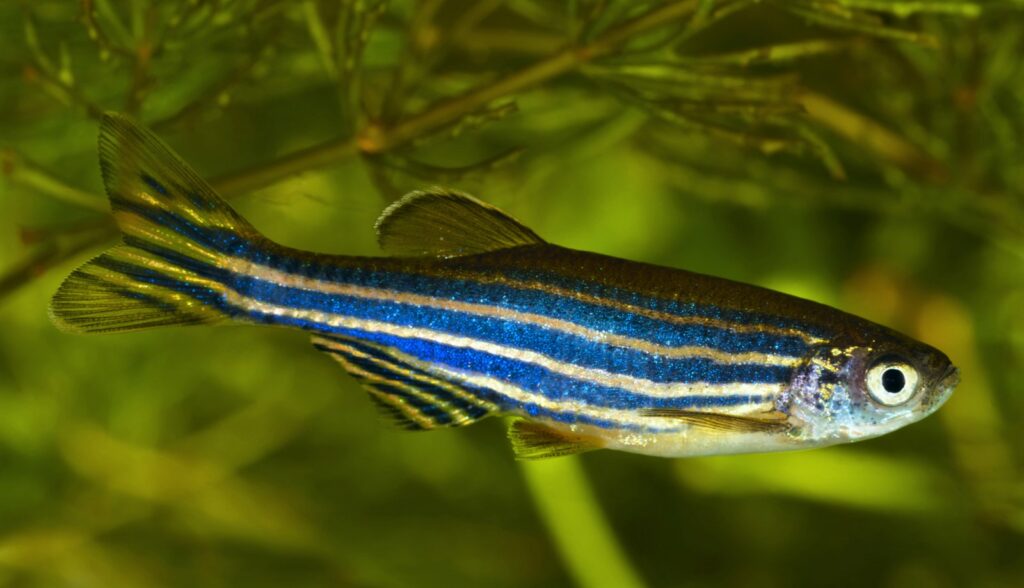
The zebra danios are my favorite low maintenance fish. It is small, generous patterned, very hardy, and easy to spawn. It is an excellent novice fish. They are from South Asia, where they usually swim in cool mountain rivers.
They can live up to 75F temperature in water and tropical environments. Being cyprinids, the danio is closely related to the barbs and fantail goldfish.
And like these fish, they are hearty omnivores! So, feed both plants and animals with canned foods like flakes and pellets, frozen foods like shrimp and spirulina flakes.
They also come in many morphs, including golden zebras, leopard, albinos, and longfin zebra danios. All will find glory and volunteer to reproduce with one another.
What Do Snails Eat In An Aquarium?
6) Dwarf Otocinclus
Choosing an algae eater for your community fish tank can be a real hassle. Such normal Plecostomus become larger and more aggressive with age. The Dwarf Otocinclus is a peaceful schooling option that stays below 2 inches.
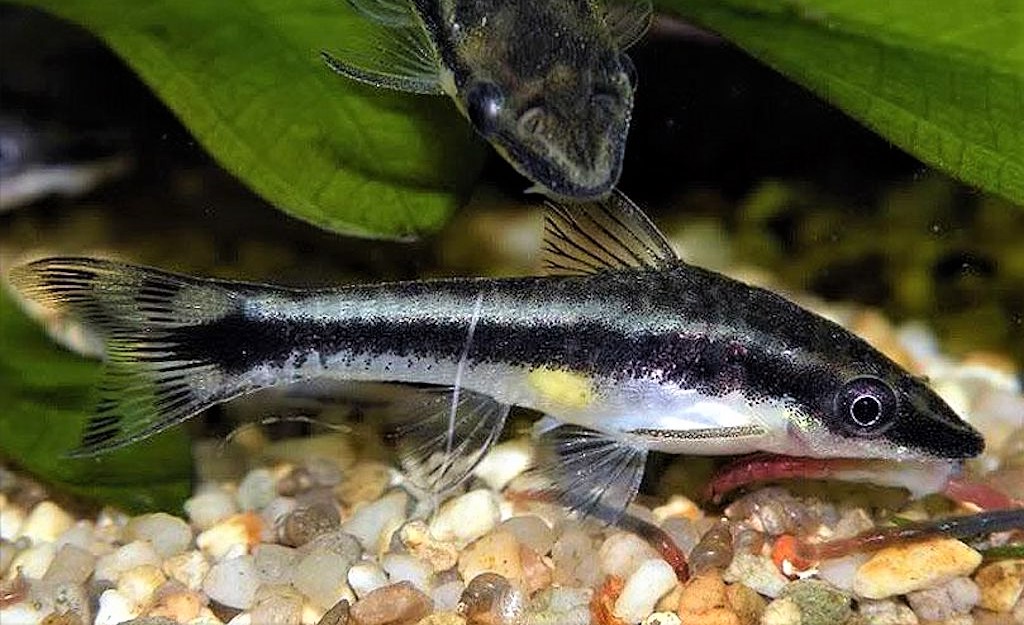
They are just as good at eating algae as very gentle with leaves and delicate plants. They are better algae eaters in a planted aquarium.
Once they have cleaned your algae in your tank, you should give them ready and fresh vegetarian food. They do not fight with other fish during the day so feed them in the morning or evening.
As an Amazonian native, you should keep your fishes in elevated tropical temperatures 75-84F. They also prefer soft, acidic, to neutral conditions pH 5.5-7.0.
7) White Cloud Minnow
As Cyprinids, White cloud mountain minnow is the younger cousin of Claude Minos Goldfish and Barbs. Sometimes known as the Neon Tetra of poor men, White Clouds minnow has a hobby for decades, but it has never been so popular.
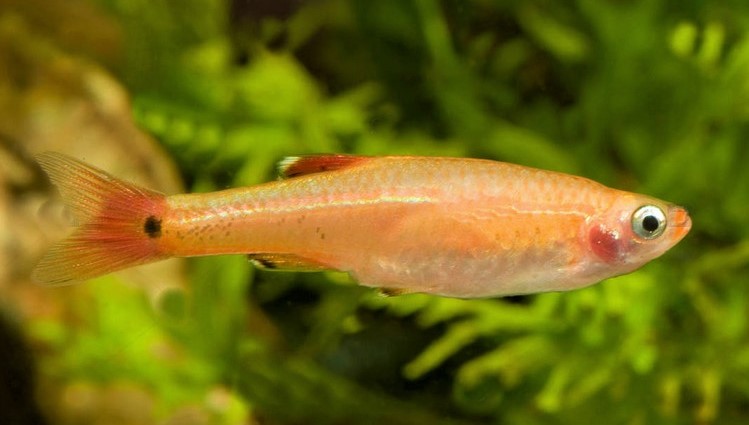
Like the neon tetras, they also have a wide iridescence strip that catches the light and signals their partners and competitors.
This is a cold-water fish. They prefer temperatures between 62-72F. The cold water is good for this fish, and they work well at 41F!
In 72F, they begin to strive and fade in colour. Males have a ruby red nose, redfin edges, and a bright body layer. White Cloud Minos are mostly peaceful and can also be kept as a group in small nano tanks.
White cloud minnows greedily eat any small or canned live food. They choose their water conditions as close to neutral (pH 6.5-7.5) with moderate to low water hardness.
How to Change the Water in a Fish Tank for Health & Growth?
8) Guppy Fish
Guppy fishes are easy to raise than other small fishes. Another common name for them is “million fish” because they can easily breed even in such un-clean conditions.
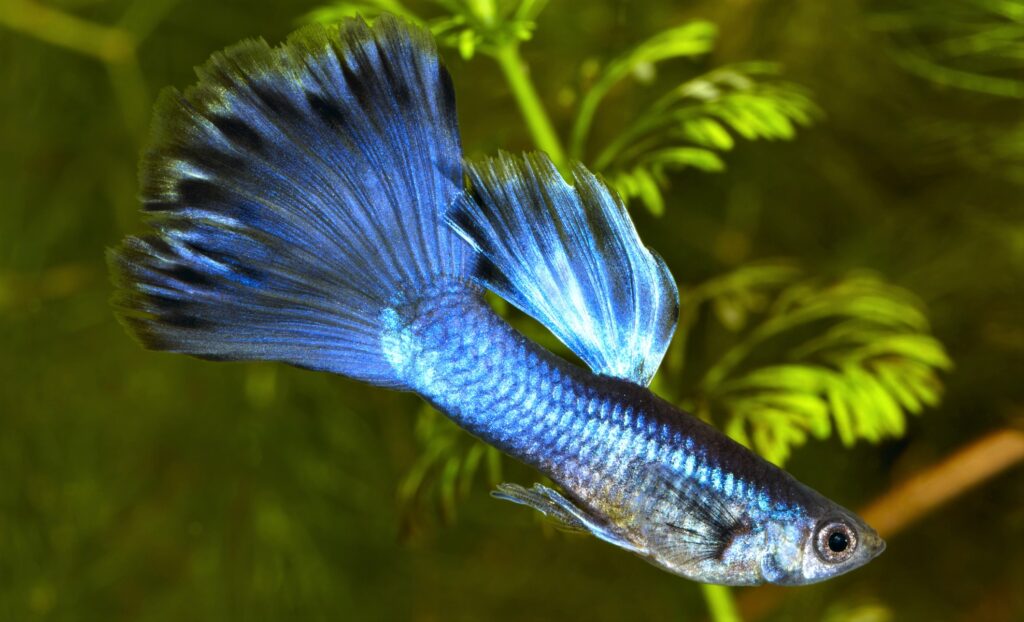
Unfortunately, they eat their young children if they do not have a safe place. If your aquarium has living space or dense plants like guppy grass (Najas guadalupensis), you can expect some fry to reach maturity.
Guppies are also less conservative when it comes to living with other fish. Males will chase females with anger and occasionally make small fights with each other. They generally ignore other fish and are friendly.
Guppies are omnivorous but slightly lean towards the animal protein side. They especially like mosquito larvae, blood worms, and other insect larvae. They will also eat soft algae in varieties.
9) Ghost Shrimp
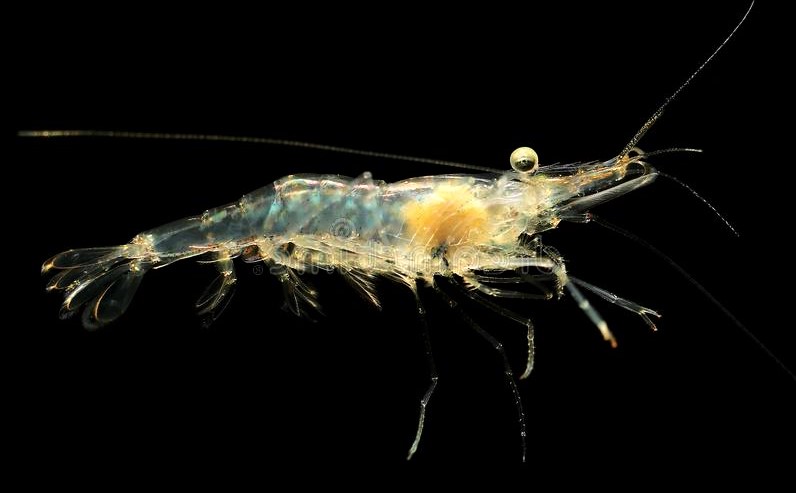
The next low maintenance fish is Ghost shrimp that are generally regarded as the best feeders. They are beautiful pets for as long as you keep them. Aside from goldfish, all fishes on this list are great with tank mate.
Ghost blue dream shrimp get their name from the transparent camouflage near them, a suffocating swamp of plants they call home.
They often look pale and fuzzy in stores. Once settled in an aquarium, they take on intricate marble trays and red antennas!
When it’s time to eat, ghost shrimp will usually swim straight out of the water column, eagerly for flakes and other mouthfuls. As a native of North America, they can tolerate both cold and hot; 65-80 ℉.
10) Cherry Barb
Cherry Barbs can make a bit of a hassle sometimes. They can be Finn Nippers and territorial, including Tiger Barbs. Others, like Tinfoil Barb, will grow in large aquariums.
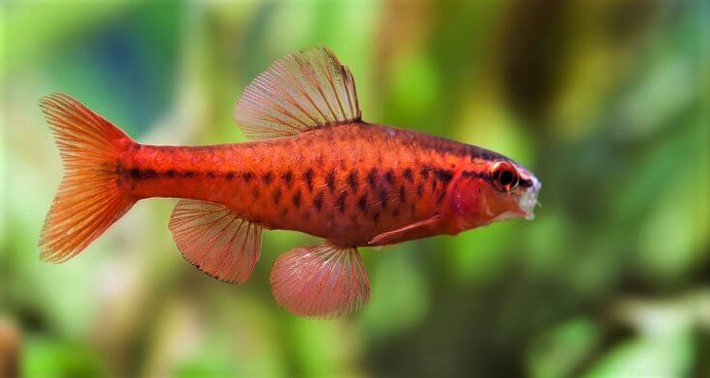
Cherry barbs are the most peaceful of this group and very active fishes. These barbs come from the island of Sri Lanka and live-in schools in streams and rivers.
They occupy the same environmental specific area as the Tetras: with the taste of small, microscopic insect larvae and other small objects.
Both males and females are beautifully contoured, but the males have a shade of red, becoming intensely colored when ready to germinate! It’s always a good idea for them to provide thick moss-like plants that they eventually shed.
Any of the low maintenance fish listed above are great for beginners, but each one has its pros and cons that you should keep in mind while choosing one for your aquarium.
In the end, the most important thing is to pay attention to your aquarium space according to your fishes. If something is wrong, your fishes will let you know about their behavior. Give them everything they need to grow, do proper care of them, and they will provide you with years of entertainment.
Final Words

